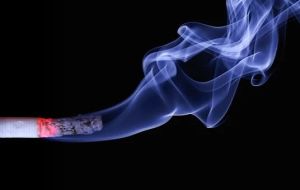Whether from a nearby fire or a previous owner’s smoking habits, smoke exposure can impact not only the health of homeowners or business employees, but also the structural integrity of a building. Chemicals and compounds in smoke, such as soot, tar, carbon monoxide, and carbon dioxide, can damage the health of exposed individuals and stir up allergies and asthmatic attacks. The acidic nature of smoke also causes it to erode and rust metal surfaces if it is left unattended. This makes smoke remediation of the utmost importance whenever a building has been exposed to smoke.
Immediate Action
The best way to minimize the effects of smoke damage is to take immediate steps to begin smoke remediation. To stop the spread of smoke, any ventilation systems, such as air conditioning or heating, should be turned off. This will keep them from spreading smoke-filled air through the entire building. Windows and doors to the outdoors should also be kept open, with fans set up to evacuate smoke out of the building.
Once the building is aired out, each piece of property exposed to the smoke should be inspected. If a piece of furniture or equipment is heavily damaged, it should be removed from the building. This will reduce the amount of smoke odor, although it won’t entirely eliminate it.
Dry cleaning walls and floors, as well as wiping them down with paint thinner or rubbing alcohol, will also help reduce smoke damage. By cleaning surface soot and smudge stains, the acidic components of the smoke will have less of an effect. Cleaning stains soon after their creation also makes it easier to completely eliminate them. While this cleaning can reduce the amount of sustained smoke damage and odors, it will not completely erase them. For this, it’s best to hire a professional team with proper chemicals and techniques.
Physical Smoke Remediation
A variety of equipment and chemicals are available in smoke remediation. Steam machines release warm steam that loosens smoke particles. Residual oil and tar will be melted by the heat. Once the particles have been softened, a microfibre cloth or sponge is used to wipe away every trace.
As smoke is acidic, alkaline chemicals must be used in order to neutralize the materials. Once this has been accomplished, micro-filter equipment can be used to clean fabrics, such as curtains, carpets, and furniture.
Certified professionals use these tactics on all areas of a building, including those that are not able to be thoroughly cleaned without special equipment. This includes the ventilation system, drywall, insulation, and flooring.
Eliminating Lingering Odors
Cleaning away surface soot and smoke residue decreases smoke damage, but it often doesn’t eliminate the odor of smoke. For complete smoke remediation, the smell of smoke must be completely eliminated. Ozone machines can be used because they release ozone particles that bond with the smoke particles, effectively neutralizing them.
Machines such as misters, thermal foggers or humidifiers may also be used to release lingering smoke odors from porous materials. The increased humidity level caused by these machines opens the pores of wood framing and other materials. Smoke particles can then be drawn out of the materials, eliminating the odor.
Cigarette Smoke vs Wildfire and Building Fire Smoke
Smoke damage due to cigarette smoke can be more difficult to clean than smoke generated by a wildfire or building fire. The constant reinforcement of smoke whenever a cigarette is lit results in heavy buildup of smoke. The smoke molecules sink deep into walls and furniture in a space, making them difficult to clean out. Cigarette smoke can also result in severe damage to paint and wallpaper, discoloring and deforming the materials. If the damage is great enough, this could force a building owner to repaint and recover walls
Fires raging at a high temperature, such as wildfires, typically leave fine, powdered smoke residue. While this is easy to clean on a surface level, the fine dust can sink into the pores of materials, such as drywall and wood. Without equipment, such as a thermal fogger or ozone machine, the small particles are virtually impossible to draw out.
Each form of smoke remediation is different, and each will be best suited for specific types of smoke. By hiring certified professionals, a building owner can be sure that the most efficient techniques will be used. Odors and residual smoke will be eliminated, resulting in a fresh building that is free of any sight or scent of smoke.
